2008.03.04 A second look at eta mesons in the STAR Endcap Calorimeter
A second look at eta mesons in the STAR Endcap Calorimeter
Introduction
In case you missed it, the first look is
. I processed
from the 2006 pp longitudinal 2 runs and picked events tagged with the L2gamma trigger id (137641). I ran the StGammaMaker on the MuDst files from these runs and produced gamma trees. These gamma trees are available at
/star/institutions/iucf/pibero/2007/etaLong/
. Within the StGammaMaker framework, I developed code to seek candidate etas with emphasis on high purity. The macros and source files are:
Note, the workhorse function is
StEtaFinder::findTowerPoints()
.
Algorithm
- Find seed tower with pT > 0.8 GeV
- Require no TPC track into the seed tower
- Get the ranges of SMD U & V strips that span the volume of the seed tower
- Find the strips with maximum energy within these ranges
- Require that the maximum strips have more than 2 MeV in each SMD plane
- Get the intersection of the maximum strips and ensures that it lies within 70% of the fiducial volume of the seed tower
- Make sure the photon candidate responsible for the SMD clusters above enters and exits the same seed tower
- Form a 11-strip cluster in each plane with +/-5 strips around the max strip and require that it contains 70% of the energy in a range +/-20 strips around the max strip
- Require that the energy asymmetry between the 11-strip clusters in the U and V planes be less than 20%
- Create a point using the energy of the seed tower and the position of the intersection of the max strips in the SMD U and V planes
- Repeat until seed towers in the event are exhausted
- Combine different points in the event to calculate the invariant mass
- Diphoton pairs with invariant mass between 0.4 and 0.6 GeV are saved to a PDF file
Invariant mass
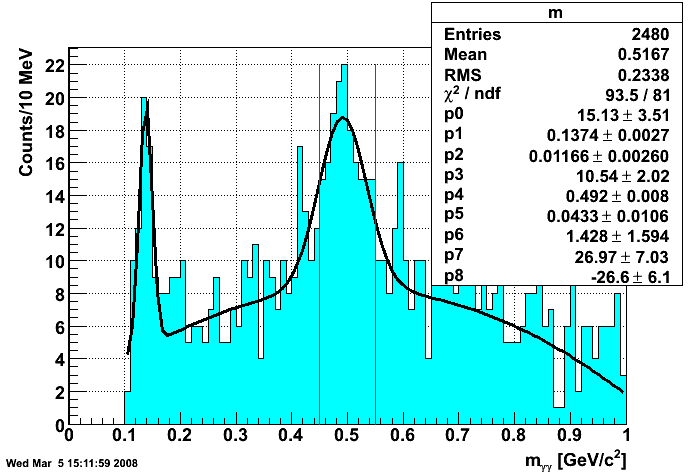
I fit the diphoton invariant mass with two Gaussians, one for the pi0 peak (p0-p2) and another one for the eta peak (p3-p5) plus a quadratic for the background (p6-p8). The Gaussian is of the form p0*exp(0.5*((x-p1)/p2)**2) and the quadratic is of the form p6*+p7*x+p8*x**2. A slightly better chi2/ndf in the fit is achieved by using Breit-Wigner functions instead of Gaussians for the signal here. I calculate the raw yield of etas from the fit as p3*sqrt(2*pi)*p5/bin_width = 85 where each bin is 0.010 GeV wide. I select candidate etas in the mass range 0.45 to 0.55 GeV and plot their photon response in the shower maximum detector here. Since we are interested in collecting photons of pT > 7 GeV, only those candidate photons with pT > 5 GeV will be used in the shower shape library. I also calculate the background under the signal region by integrating the background fit from 0.45 to 0.55 GeV and get 82 counts.
- S = 85
- B = 82
- S:B = 1.03:1
- S/√S+B = 6.6
Additional plots
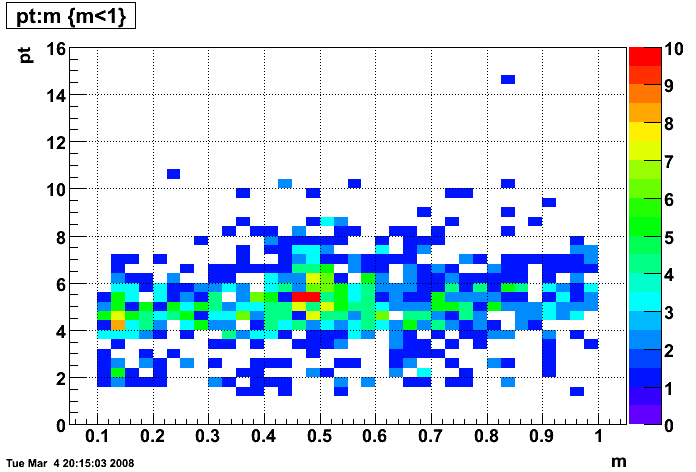
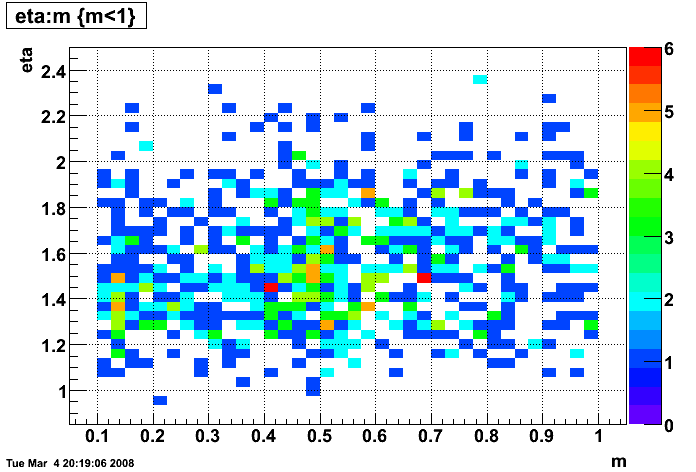
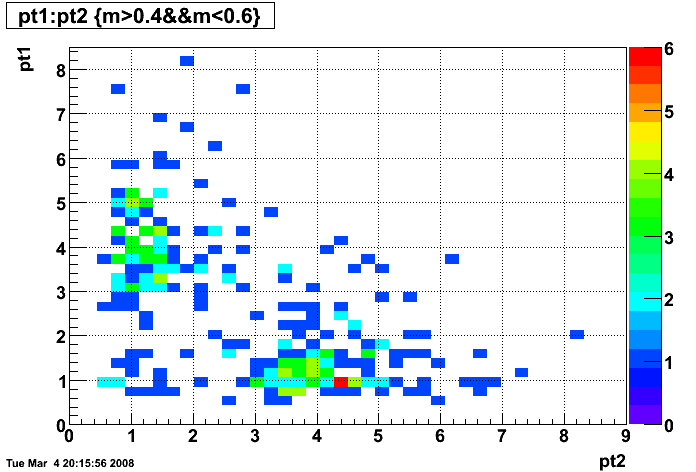
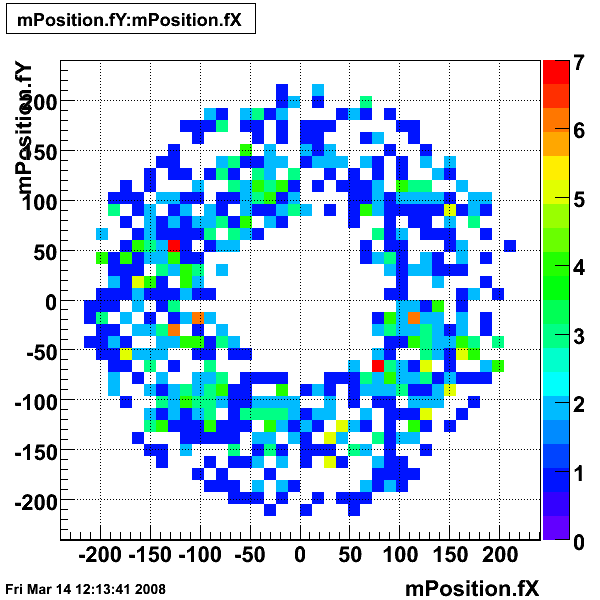
Pibero Djawotho Last updated at Tue Mar 4 16:21:13 EST 2008